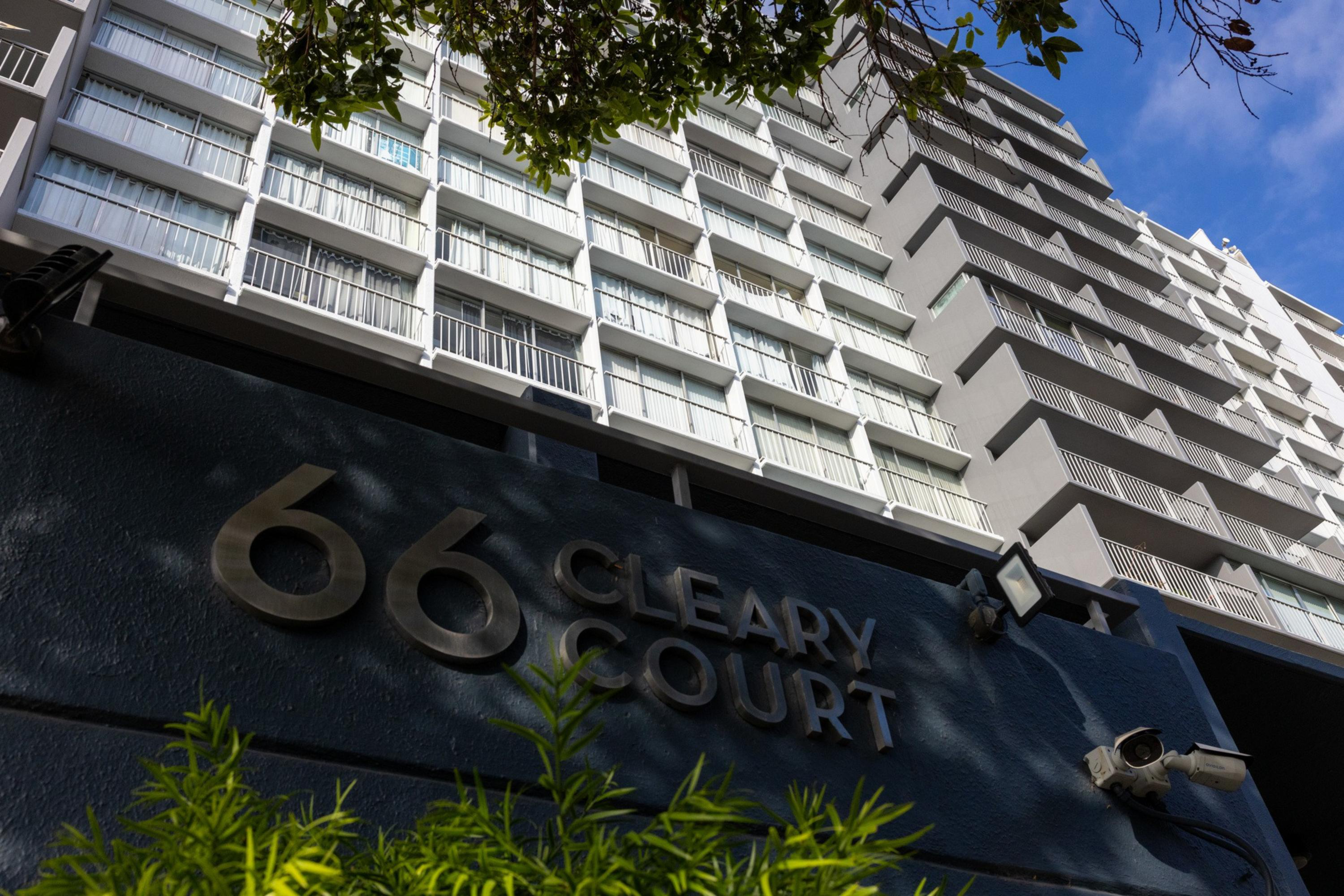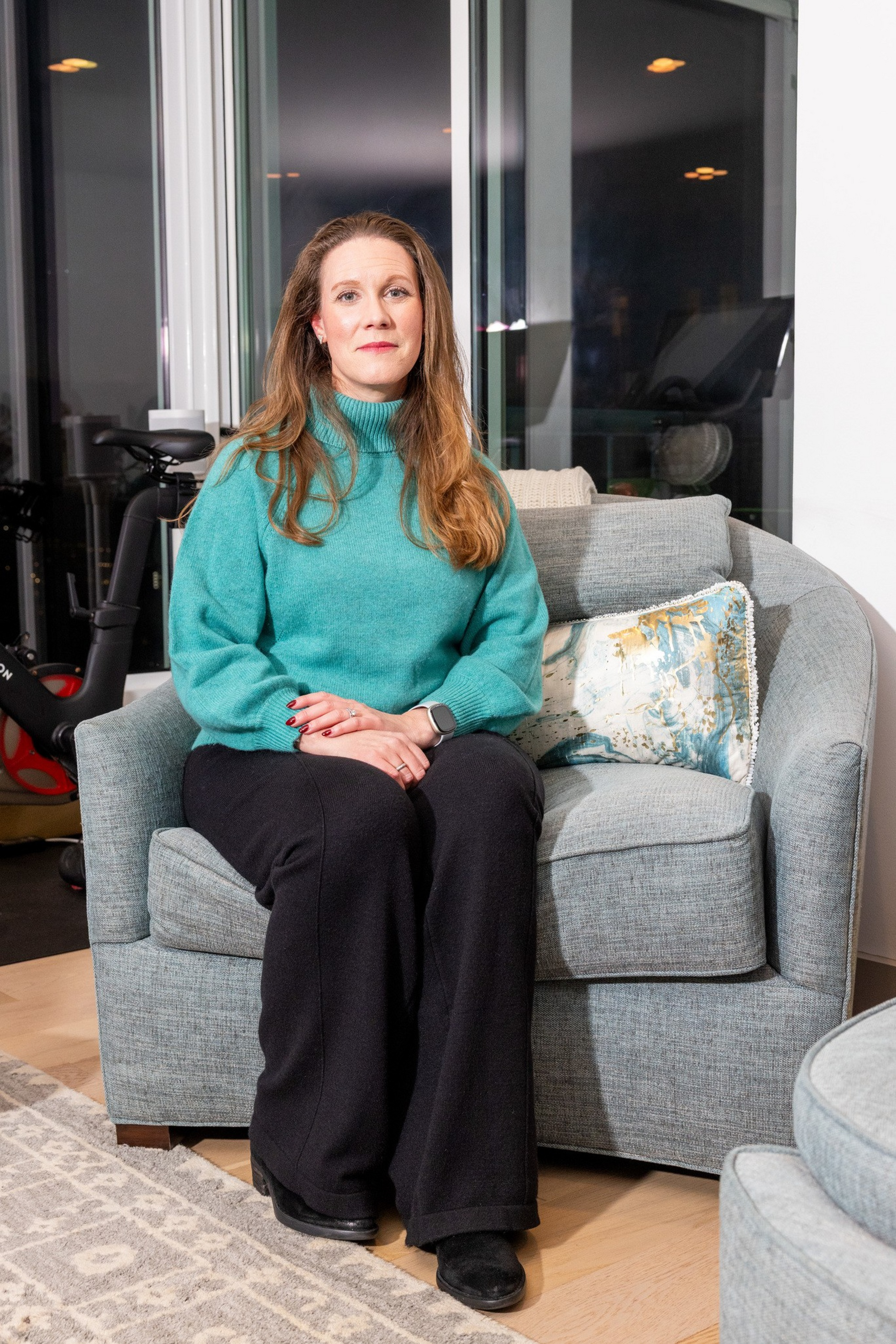Elaine Hilp has lived in her apartment in North Beach for four decades. Even at 101 years old (opens in new tab), she is among the first of her neighbors to sort through letters in the building’s mailroom each morning and prefers to shop for her own groceries and cook her own meals.
But the last few months have been anything but routine for Hilp, as her condo’s homeowners association has projected astronomical costs to enable it to conform to stringent fire codes. A bureaucratic rule meant to protect Hilp and her neighbors might end up pushing her out of her home.
Since her building was constructed before 1975, it is subject to a change made to the San Francisco fire code in 2022, mandating the installation of automatic sprinklers in every residential high-rise unit.
Meant to save lives and reduce fire risk, the requirement is an expensive — and for many, intrusive — proposition.
Installing sprinklers means walls, ceilings, and even nearby streets might need to be excavated to connect new pipes to the city’s complex water system. The law fails to address where thousands of displaced residents would go while such work takes place.
Moreover, the financial burden would fall squarely on residents. Whether as homeowners or renters facing passed-through costs, they could be on the hook for renovations estimated in 2016 (opens in new tab) by the Budget and Legislative Analyst to run $113,000 to $300,000 per unit — and construction and material prices have only risen since.
Hilp said gradual upgrades are expected when living in an older building, but the sprinkler mandate goes too far too soon. “It’s nuts,” she said. “People would have to move out.”
After the ordinance was passed in 2022 (opens in new tab), the San Francisco Fire Department counted 126 buildings that would need to be retrofitted, a third of which are co-op-owned condominiums. The majority are in Districts 2 and 3 — which span the Marina to Lower Nob Hill.


“Just because people bought a high-rise unit doesn’t mean they can afford to double their HOA dues or temporarily relocate while paying a mortgage,” said Kelly Joslin, a fifth-grade teacher who, with her husband, in 2017 bought a condo in a 21-story tower near Russian Hill.
If the ordinance isn’t altered — as the mayor and two supervisors are considering — Joslin said they’ll have to sell their home at a loss since they would not be able to afford such a drastic increase in costs. Supervisor Danny Sauter, who represents her neighborhood, said he is concerned that the mandate will force thousands of constituents out of their homes for months or years if not amended to exclude buildings not undertaking major renovations.
“We can find a better balance that still bolsters safety but does not cause the years of construction and widespread displacement the current mandate would cause,” he said.
The Board of Supervisors passed the measure in response to a series of high-profile apartment fires, which raised concerns about flammable lithium-ion batteries (opens in new tab), evacuation routes (opens in new tab), and the dearth of sprinklers in older buildings (opens in new tab).
As it stands, building owners are required to submit sprinkler system drawings by 2027, obtain a water supply by 2031, and install the system and get it approved by the Fire Department by 2035.
Although the deadlines appear far away, each step requires hiring consultants to study the property, prepare drawings, and negotiate with the city for permits and approvals. If an HOA manages to find a 10-year loan to help residents pay for the installation prior to the city’s deadline, the average owner might have as much as $3,000 in additional expenses a month, depending on interest rates.
“The risk versus benefit doesn’t seem to equate,” Joslin said. Outside of the sprinkler mandate, her HOA has banned e-bikes and scooters inside units. They have also stopped installing electric charging stations and are in the process of purchasing additional fire blankets to cover residents’ electric vehicles.
For condo owners and renters, the sprinkler mandate is yet another well-intentioned policy with unintended consequences. Over the decades, obscure laws framed as consumer protections — such as mandatory balcony inspections and building warranty guarantees — have passed on the costs of those reforms primarily to residents, tanking home values and freezing out buyers.
A spokesperson for the San Francisco Fire Department said the mandate cannot be modified to lower the costs for residents. Citing the same BLA study from 2016, SFFD said costs were “factored in when the building owners were given 12 years to do the upgrade.”
At a Fire Commission meeting last week, Dan Torres, a member of Sprinkler Fitters Local 483, said residents are overstating the ordinance’s costs and risks. “What is a life worth?” he asked. Union reps did not respond to a request for comment.
Residents of Hilp’s North Beach building disagree. Last year, the HOA began planning a sprinkler system and shared the designs with the Fire Department. Work halted, however, when experts determined that installing the required underground pumps would require digging a four-foot trench down to Columbus Avenue, a major thoroughfare, because the tower sits on a steep hill.
Furthermore, new pipes would need to be installed in every unit, which would require prolonged water outages and remodeling of ceilings for the removal of asbestos and lead-based paint.
“If you absolutely have to sell your condo today, this mandate is a fact that will need to be disclosed,” said Gregg Lynn of Sotheby’s, who represents many elderly clients in the neighborhood. “The prices buyers are willing to pay will take into account the future inconvenience and costs of installing sprinklers.”
Per state law, all newly constructed buildings must have sprinklers. Mandating their installation in older buildings, on the other hand, is left to local jurisdictions.
San Francisco’s ordinance requires sprinklers to be installed in each unit of a residential high-rise with an occupied floor more than 120 feet above the lowest level of access by Fire Department vehicles. By contrast, Los Angeles, which passed an ordinance (opens in new tab) for buildings built before 1943, requires that sprinklers be installed only in certain areas, such as stairwells and doors that lead to public corridors.


In order to amend the fire code in San Francisco, a revision would have to be introduced and passed by the Board of Supervisors. Current supervisors Connie Chan, Rafael Mandelman, Myrna Melgar, and Shamann Walton all sponsored the ordinance in 2022. Getting those supervisors to reverse course would be difficult, since appearing to weaken a safety requirement could expose officials to political blowback if a fire resulted in injury or death.
Newcomers are not as beholden to policies made before their time.
The office of Mayor Daniel Lurie — who appointed a new fire chief in January (opens in new tab) — said it is aware of the sprinkler ordinance and is exploring ways to amend the mandate to address the affordability concerns raised by residents.
District 2 Supervisor Stephen Sherrill said his office will try to work with the Fire Department to explore other ways to reduce fire risk in older buildings that wouldn’t displace residents. Among those options is the installation of fire-resistant doors.
“Our job is to protect lives without creating new hardships,” he said. “We don’t need to put our residents, especially our seniors, in a position where they are choosing between fire safety and staying in their homes.”
As for Hilp? When asked where she would go if her apartment were in line for an extensive sprinkler-related renovation, the centenarian thought briefly before flashing a coy smile.
“I guess I would go to the morgue,” she said.
